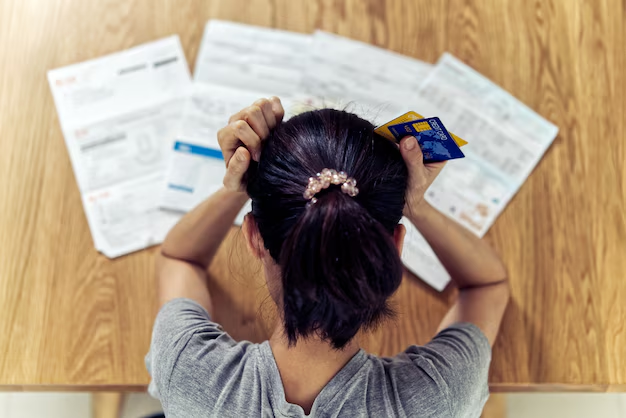Navigating the Complex World of Student Loan Bankruptcy: Is Discharge Possible?
Facing financial difficulties is a reality many have encountered at some point in their lives. When these challenges become overwhelming, declaring bankruptcy might emerge as a potential lifeline. Yet, when it comes to student loans, this path is fraught with complexities. Can student loans truly be discharged in bankruptcy? This comprehensive guide seeks to explore this nuanced topic from multiple angles, providing valuable insights into its possibilities and pitfalls.
🎯 Understanding the Basics: Bankruptcy and Student Loans
What is Bankruptcy?
Bankruptcy is a legal process designed to help individuals overwhelmed by debt. It offers a fresh start by liquidating assets to repay creditors or by creating a repayment plan. The two most common types of individual bankruptcy are Chapter 7 and Chapter 13.
Student Loans and Bankruptcy
Historically, student loans have been challenging to discharge in bankruptcy. Unlike credit card debt or medical bills, student loans demand a unique burden of proof—demonstrating undue hardship.
📚 The Undue Hardship Standard
What Constitutes Undue Hardship?
The term "undue hardship" lacks a singular definition in the legal framework and varies by jurisdiction. However, courts often reference the Brunner Test, a criterion established in 1987, to assess:
- Poverty: Would repaying the loans prevent the debtor from maintaining a minimal standard of living?
- Persistence: Is the financial situation likely to persist for a significant portion of the repayment period?
- Good Faith: Has the debtor made genuine efforts to repay the student loans?
This stringent test explains why many borrowers find it difficult to meet the required standard.
🔍 Exploring Legal Nuances: The Case for Loan Discharge
While challenging, discharging student loans is not impossible. Several cases have demonstrated the potential for successful discharge under specific circumstances:
- Severity of Financial Circumstances: Situations involving prolonged unemployment, severe health issues, or disability can strengthen undue hardship claims.
- Good Faith Efforts: Borrowers who can illustrate attempts to reduce expenses, find better-paying jobs, or negotiate loan terms may prove their genuine efforts.
- Legal Representation: Skilled legal counsel can navigate complex bankruptcy proceedings, advocating effectively for loan discharge.
🗣️ Personal Stories: Those Who Succeeded
While rare, numerous accounts showcase individuals who have successfully discharged student loans under bankruptcy:
- Health-Related Issues: Chronic health problems can impact earning potential, sometimes qualifying borrowers for undue hardship status.
- Single Parents: Balancing low-income jobs with parenting responsibilities, some single parents have managed to prove their inability to afford loan payments.
These stories highlight that while it's difficult, it's possible to achieve discharge with compelling evidence and persistence.
🔄 Alternative Solutions: Beyond Bankruptcy
Filing for bankruptcy isn't the only solution. Here are alternative strategies worth considering:
- Income-Driven Repayment Plans (IDR): Linking loan payments to income levels can reduce the monthly burden, sometimes forgiving the balance after a set period.
- Loan Forgiveness Programs: Programs like Public Service Loan Forgiveness offer debt relief for certain vocations, such as teaching or public service work.
- Refinancing Loans: Refinancing can adjust interest rates and repayment terms, potentially easing financial strain.
- Deferment or Forbearance: Temporarily pausing or reducing loan payments during challenging periods can be life-altering.
🤝 Seeking Legal and Financial Advice
Navigating the complexities of student loan bankruptcy often necessitates professional guidance. Consider:
- Legal Advice: A bankruptcy attorney specializing in student loans can assess individual cases and potential strategies.
- Financial Counseling: Credit counseling agencies offer advice on managing debts and evaluating all available options beyond bankruptcy.
📊 Visual Insights: Key Takeaways on Student Loan Bankruptcy
Here's a concise overview to aid understanding and retention:
Checklist for Considering Student Loan Bankruptcy:
- 🏠 Analyze Financial Hardship: Assess your ability to maintain a minimal standard of living.
- 💡 Explore Alternatives: Investigate IDR plans and forgiveness programs.
- 📚 Understand Legal Criteria: Familiarize yourself with the Brunner Test.
- 🤔 Evaluate Persistence: Consider if your financial situation is likely to persist.
- 📞 Seek Professional Guidance: Contact a legal or financial expert for personalized advice.
🙌 Turning Challenge into Opportunity
The ability to discharge student loans in bankruptcy is admittedly rare, demanding rigorous proof of undue hardship. Yet, understanding the intricacies of bankruptcy law, combined with seeking expert advice, can illuminate viable pathways even in dire financial circumstances.
Looking past bankruptcy can uncover other financial strategies suited for different circumstances, empowering individuals to regain control over their financial futures. Ultimately, knowledge is the vehicle through which borrowers can navigate the challenging landscape of student loan debt, turning obstacles into opportunities for a better financial tomorrow.

Related Topics
- Am I Eligible For Student Loan Forgiveness
- Are Federal Student Loans Paused
- Are My Student Loans Forgiven
- Are Student Loan Payments Tax Deductible
- Are Student Loan Repayments Tax Deductible
- Are Student Loans Being Forgiven
- Are Student Loans Considered As Debt When Getting a Heloc
- Are Student Loans Considered As Debts When Getting a Heloc
- Are Student Loans Considered When Getting a Heloc
- Are Student Loans Considered When Getting a Heloc In Illino